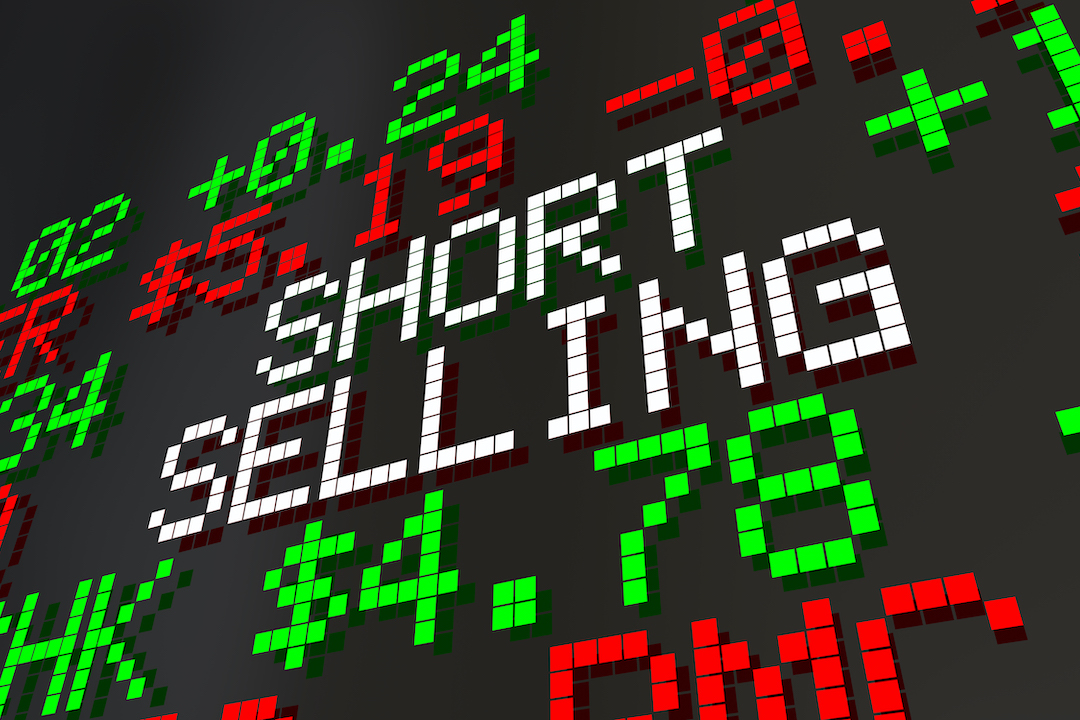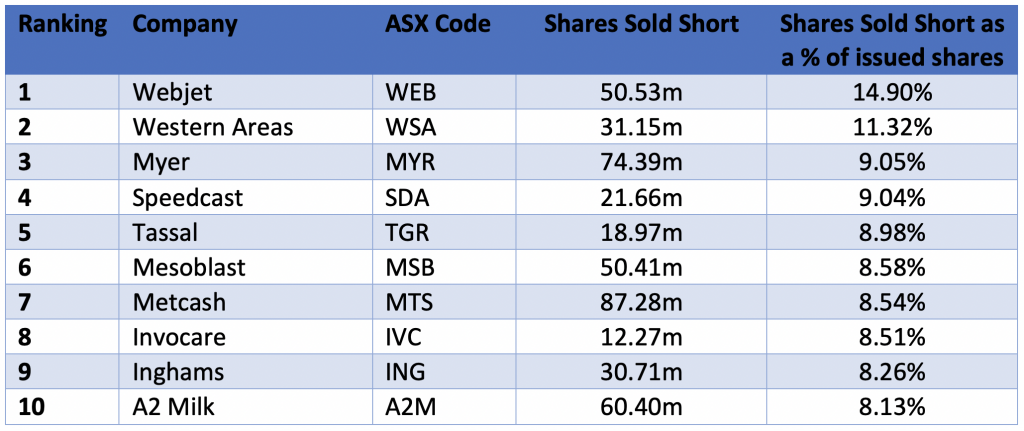

Peter Switzer’s article on short selling in Monday’s Switzer Daily attracted some passionate comments mostly saying that “short selling should be absolutely banned”. A petition signed by more than 50,000 investors has also been circulating.
So with passions clearly aroused, I am going to have a go at defending the indefensible – short selling.
Let start at the beginning. Short selling is selling something that you don’t own. A short seller profits from a falling price – selling at a higher price first, and then buying back at a lower price. It is the exact opposite of normal trading: buying first at a lower price to sell out at a higher price.
To short sell a stock, something that you do not own, you need to be able to “borrow” the stock to make the delivery on the ASX. This is where the major fund managers and large superannuation funds come in – they lend stock to the short sellers. In return, the short seller secures the loan by giving the super fund cash. When the short seller closes the position on the ASX by buying the stock back, he/she returns the stock to the super fund and gets their cash back. The super fund gets paid for lending the stock by taking a margin on the cash. This adds to the fund’s income and improves the overall investment return to its members.
The argument for short selling is that it adds stability and reduces market volatility because short sellers can be “buyers” when others dare not (reducing sudden dips down), and “sellers” when everyone else is stampeding to buy. Think back to March 23 at the height of the Covid-19 market meltdown when there wasn’t a buyer to be found apart from the short sellers, or a stock like Afterpay when at times, the only sellers have been the shorters.
Interestingly, the academic research, locally and internationally, largely supports the proposition that short selling reduces market volatility and is a net positive for the market. That’s why ASIC allows it in Australia.
It is also worth distinguishing between the four categories of short selling when thinking about the “pros” or “cons” of short selling..
The first category is just a simple outright short sale – “company ABC is a dog of a company” – so the short seller sells ABC. The second is the ‘relative’ short sale. This involves being “long” one company from an industry sector, and being “short” another company in the same sector. Essentially, the short seller is saying that company A will do better than company B. Examples could be buy Woolworths and sell Coles; buy Fortescue and sell Rio; buy QBE and sell IAG; or buy CBA and sell ANZ etc. By being long one stock and short the other, the short seller is not taking market or industry risk, just relative performance risk.
The third category is a ‘sector’ position, where companies from a particular industry or sector are sold because the short seller thinks that there are significant headwinds, or they are over-hyped and over-priced. A recent example related to discretionary retailers, which were targeted by short sellers when Amazon announced that it would be launching in Australia and many feared that local retailers would be wiped out. As it turned out, the short sellers got this spectacularly wrong. More recent examples have been banks, lithium miners and rare earths producers.
Finally, market makers and other professionals short sell to hedge derivative positions such as exchange traded options and warrants, or to cater for settlement mismatches. Occasionally, a short seller may arbitrage the futures markets, resulting in the widespread short sales of physical stocks.
It is hard to take issue with investment professionals short selling to initiate a ‘sector’ or ‘relative’ short sale, or for hedging purposes. Most of the angst comes with the outright short sale, where there have been examples of really bad behaviour. A recent target was jobs website SEEK, who came under fire from activist investor Blue Orca Capital. In a report, Blue Orca said that it is short SEEK. Explaining this, It said that SEEK’s 61% owned Chinese employment jobsite, Zhaopin, had created fake job advertisements and fake CVs to boost traffic, and referred to accounting irregularities.
If you accept the argument that short selling reduces market volatility (I should point out that not everyone does), what are the “cons” of short selling?. The first is that it is not “fair”. I can’t short sell, nor can most private investors, nor can most fund managers and super funds (the latter are prohibited by their trust deed). Only a small number of investors - hedge fund managers, activist investors, investment banks and other professionals - can short sell.
Secondly, outright short sales are sometimes accompanied by “campaigns” to talk the share price down – research reports or other media pointing to shortcomings in the underlying company busines. Often released in an overseas jurisdictions because the participants aren’t subject to Australia’s market manipulation laws, these reports are designed to target maximum damage. This is the nasty part of the shorting business and local investors can pay the price.
The third “con” is around the transparency of short selling , which is still poor. Take for example ASIC’s daily report on short positions.
ASIC releases this report around midday each day (it is also available on the ASX). It shows for every company, the number of shares that have been sold short and this number as a percentage of the total number of shares on issue. In the table below, you can see the top 10 shorted companies from yesterday’s (Wednesday’s) ASIC report in descending order in terms of the percentage of shares sold short. The most shorted company, Webjet, has a little over 50 million shares sold short representing almost 15% of its entire share capital.
Top 10 most shorted companies

The problem is that data, released on a Wednesday, covers traded positions taken on the previous Thursday. It is three and a half trading days out of date!
Part of the issue is that ASIC never got around to changing the reporting rule when the market moved from T+3 (trade date plus 3 days) to a T+2 settlement basis a few years back. The bigger issue is that is based on settlement date, rather than trade date.
With modern technology, there is no real reason why the market couldn’t have “real time” (or at least, end of day ) reporting of short positions so that it is fully informed. Short sales increase the “free pool” of stock – and this can be a factor that influences buy or sell decisions.
Another issue is how to police the “misinformation” and “market manipulation” by some combatants. I know this is going to be hard, but I can’t see why ASIC cannot work with foreign regulators to develop a common or reciprocal enforcement approach.
Finally, short selling could be made “fairer” by providing retail investors and others the opportunity to short sell. I would really like to sell NAB shares and buy Westpac shares at the current spread of almost $3.40 – so a broker who could develop the order type and borrow the shares for me would get my business.
I support short selling – but ASIC needs to make it more transparent, punish bad behaviour, and make it fairer.